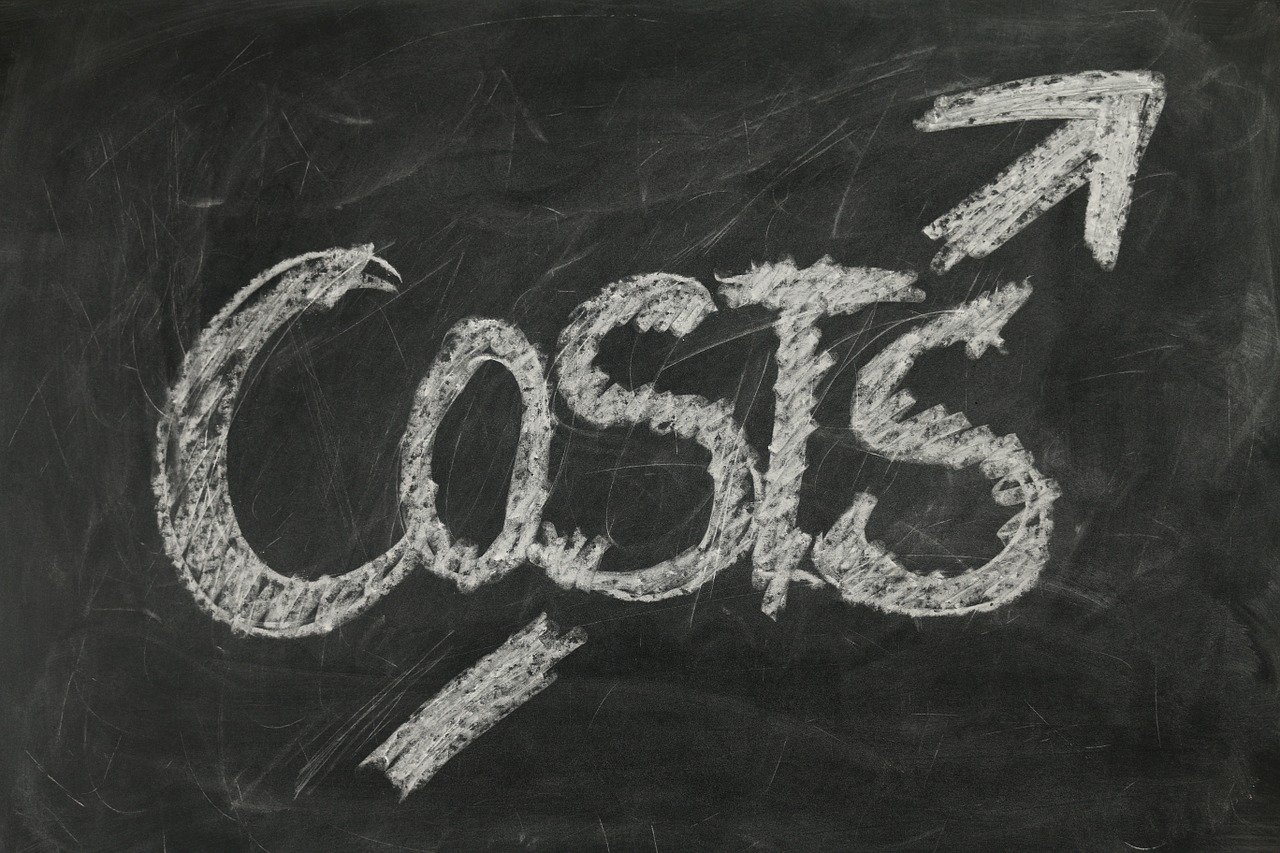Capital costs, often referred to as fixed costs or one-time expenses, are a crucial aspect of any business or project. These costs encompass the initial investments required to acquire assets, such as land, buildings, equipment, and machinery, that are necessary for the operations of a company or the execution of a project. Understanding capital costs is essential for effective financial planning, budgeting, and decision-making processes.
The relevance of capital costs cannot be overstated. According to a recent study by the National Association of Manufacturers, inadequate planning and management of capital costs are among the leading causes of project delays and budget overruns in the manufacturing sector. In fact, the study revealed that over 60% of manufacturing projects exceeded their initial capital cost estimates, resulting in significant financial losses and operational disruptions.
Table of Contents
- Defining Capital Costs
- Types of Capital Costs
- Calculating Capital Costs
- Considerations for Capital Cost Management
- Strategies for Effective Capital Cost Management
- Additional Resources and Further Reading
- Practical Tips and Actionable Advice
- Conclusion
Defining Capital Costs
Capital costs, also known as capital expenditures or CAPEX, refer to the funds required to acquire, upgrade, or maintain long-term assets that have a useful life of more than one year. These assets can include land, buildings, machinery, equipment, vehicles, and other fixed assets necessary for the operations of a business or the execution of a project.
Types of Capital Costs
Capital costs can be classified into various categories based on the nature of the assets acquired or the purpose they serve. Here are some common types of capital costs:
| Type of Capital Cost | Description | Examples |
|---|---|---|
| Land and Buildings | Costs associated with acquiring land or constructing buildings | Purchase of land, construction of a factory or office building |
| Machinery and Equipment | Costs related to purchasing or upgrading machinery and equipment | Buying production machinery, computer hardware, or vehicles |
| Research and Development | Costs incurred in developing new products, processes, or technologies | Funding for research labs, prototyping, and testing |
| Infrastructure | Costs associated with developing or improving infrastructure | Building roads, bridges, or utility systems |
Calculating Capital Costs
Calculating capital costs accurately is crucial for effective budgeting and financial planning. The process typically involves estimating the initial purchase price of the asset, as well as any additional costs associated with its acquisition, installation, and preparation for use.
Here’s a general formula for calculating capital costs:
Capital Cost = Purchase Price + Installation Costs + Shipping and Handling Costs + Other Related Expenses
Other related expenses may include:
- Site preparation costs
- Training costs for operators or personnel
- Legal fees or permits
- Insurance costs
Considerations for Capital Cost Management
Effective capital cost management involves several considerations beyond the initial calculation of costs. Some key factors to consider include:
- Timing of Capital Expenditures: The timing of when capital expenditures are made can significantly impact cash flow and financial planning. It’s essential to carefully schedule capital investments to align with project timelines and available resources.
- Financing Options: Companies often need to explore different financing options, such as loans, leasing, or equity financing, to fund capital expenditures. The chosen financing method can impact the overall cost and financial risk associated with the investment.
- Asset Depreciation: Capital assets typically have a limited useful life and will need to be replaced or upgraded over time. Proper accounting for asset depreciation is crucial for accurately reflecting the true cost of ownership and making informed replacement decisions.
- Opportunity Costs: When investing in capital assets, it’s essential to consider the opportunity costs associated with tying up resources in long-term investments. Businesses must weigh the potential returns against alternative investment opportunities.

Strategies for Effective Capital Cost Management
To effectively manage capital costs and maximize the return on investment, businesses can implement the following strategies:
- Comprehensive Planning and Budgeting: Develop detailed plans and budgets that accurately estimate capital costs, taking into account all potential expenses and contingencies. Regular monitoring and adjustments are essential to ensure adherence to the budget.
- Asset Lifecycle Management: Implement a structured approach to managing the lifecycle of capital assets, including acquisition, utilization, maintenance, and eventual replacement or disposal. This can help optimize asset utilization and minimize unnecessary capital expenditures.
- Cost-Benefit Analysis: Perform thorough cost-benefit analyses for all major capital investments, considering both tangible and intangible benefits. This analysis can help prioritize investments and ensure that capital expenditures align with the organization’s strategic goals.
- Vendor and Supplier Negotiations: Leverage negotiation skills to secure favorable terms and pricing from vendors and suppliers for capital asset purchases. Establishing long-term relationships and exploring bulk purchasing options can also yield cost savings.
- Continuous Improvement and Optimization: Regularly review and optimize capital cost management processes, leveraging best practices and industry benchmarks. Continuously seek opportunities for process improvements, cost-saving measures, and operational efficiencies.
Additional Resources and Further Reading
For those interested in exploring the topic of capital costs further, the following resources may be helpful:
- Books:
- “Capital Budgeting: Theory and Practice” by Pamela P. Peterson and Frank J. Fabozzi
- “The Capital Asset Pricing Model” by Andrew Ang
- Online Resources:
- Professional Organizations:
Practical Tips and Actionable Advice
To help you effectively manage capital costs in your organization or project, here are some practical tips and actionable advice:
- Develop a Capital Expenditure Policy: Establish clear guidelines and procedures for evaluating, approving, and monitoring capital expenditures. This policy should outline the decision-making process, approval thresholds, and reporting requirements.
- Implement Capital Budgeting Processes: Develop a structured capital budgeting process that includes:
- Identifying potential capital investment opportunities
- Conducting feasibility studies and cost-benefit analyses
- Prioritizing projects based on strategic alignment and expected returns
- Allocating resources and securing funding
- Monitoring and reporting on capital expenditures
- Leverage Technology: Utilize specialized software and tools for capital cost management, such as budgeting and forecasting software, project management tools, and asset management systems. These tools can streamline processes, improve accuracy, and provide valuable insights.
- Foster Cross-functional Collaboration: Encourage collaboration between finance, operations, engineering, and other relevant departments when evaluating and managing capital investments. This cross-functional approach can provide valuable perspectives and ensure alignment across the organization.
- Conduct Regular Reviews and Audits: Periodically review and audit capital expenditures to ensure compliance with policies, identify potential cost savings, and assess the performance and return on investment of capital assets.
Conclusion
Capital costs are a significant investment for any organization and can have far-reaching implications for financial performance, operational efficiency, and long-term growth. By developing a comprehensive understanding of capital costs, implementing effective management strategies, and fostering a culture of continuous improvement, businesses can optimize their capital investments, minimize risks, and maximize returns.
Remember, effective capital cost management is not a one-time exercise but an ongoing process that requires diligence, collaboration, and a commitment to continuous improvement. Embrace best practices, leverage technology, and stay informed about industry trends to stay ahead of the curve and make informed decisions that drive long-term success.
As you embark on your capital cost management journey, keep an open mind, seek expert guidance when needed, and always strive for excellence in financial stewardship. The path to mastering capital costs may be challenging, but the rewards of efficient resource allocation and sustainable growth make it a worthwhile endeavor.






